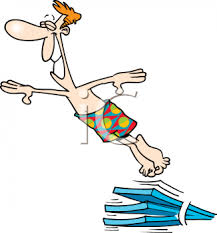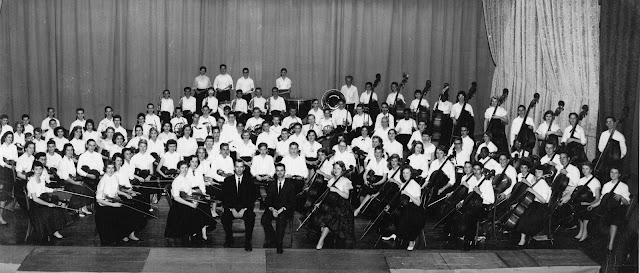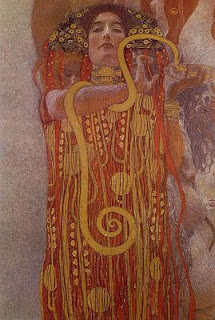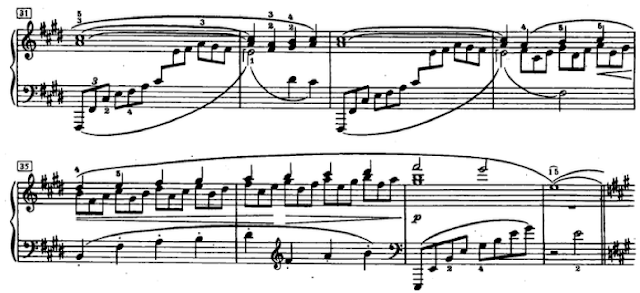A student writes: "For years I have heard about
using arm weight when playing and that we should 'drop weight' into the keyboard. I have seen demonstrations of this method in which people have literally held their arm up high and then allowed it to drop as dead weight into the keyboard espousing this to be how we should get a deep, rich tone and also how to play forte. This has always seemed so vague to me as how can one be close to the keys and also drop from a distance? How can one play this way? And should one?"
The weight of the forearm is essential to all playing. We apply more or less weight depending on the dynamic. This begs the question of how to get that weight into the key. Yes, we can drop from above into the key. I use this gesture in teaching, but only to help the student feel what it's like to play a single note that is supported by the arm. This is not a 'dead weight,' but rather a controlled movement. (I use the idea of 'dead weight' in the context of making leaps, which is another topic.) If you do this, go no farther down than the bottom of the key with the forearm. The downward motion stops at that point. I mention this because many pianists continue to drop the wrist after the note has been struck.
We need the wrist to be straight (but flexible), like a bridge, between the hand and forearm in order to access the weight of the forearm rotationally. If you allow the wrist to drop, the weight goes into the floor, which is counter-productive; once the note has been played only God can change it. But this is not, of course, a quick movement.
The rotation of the forearm is how we transfer
the weight from one note to the next. It's like walking, putting one foot in front of the other, shifting all the weight in doing so. This is another tool I use to help students feel what it's like to have the arm behind the note that is being played. Again, though, forearm rotation is only a tool designed to demonstrate a sensation. In order to progress laterally up and down the keyboard in speed, we rely on a more general way to get the arm behind the finger. This is called shaping.
The student responds: "Then it is not necessary to lift high and drop? But what about very loud, chordal playing? Does this involve a drop from above? I have seen pianists play chords with their hands already resting on the keys with no drop at all. Is the sensation anything like pressing into the keys?"
 No, it is not necessary or even desirable to drop from a height, which is not a quick movement for fast playing. In fact, the chances of hurting yourself increase proportionately the higher you drop from. I tell children not to hit the piano or it will hit you back. As I mentioned above, I use this "drop" only as a teaching tool to feel the sensation of weight.
No, it is not necessary or even desirable to drop from a height, which is not a quick movement for fast playing. In fact, the chances of hurting yourself increase proportionately the higher you drop from. I tell children not to hit the piano or it will hit you back. As I mentioned above, I use this "drop" only as a teaching tool to feel the sensation of weight.
 For slow playing you can "use a broom handle," as Taubman would say. You can get just as much sound springing from the key as you can dropping from above, as in, say, the opening chords of the Tchaikovsky concerto. The sensation is rather like flexing your knees when attempting to dive from a diving board. If you want a percussive sound as in, say, a Prokofiev concerto, go quicker into the keybed, but still from the key, or slightly above the key, depending on the tempo. Though it may sometimes look otherwise, most playing is from the key, yes, even leaps.
For slow playing you can "use a broom handle," as Taubman would say. You can get just as much sound springing from the key as you can dropping from above, as in, say, the opening chords of the Tchaikovsky concerto. The sensation is rather like flexing your knees when attempting to dive from a diving board. If you want a percussive sound as in, say, a Prokofiev concerto, go quicker into the keybed, but still from the key, or slightly above the key, depending on the tempo. Though it may sometimes look otherwise, most playing is from the key, yes, even leaps.
using arm weight when playing and that we should 'drop weight' into the keyboard. I have seen demonstrations of this method in which people have literally held their arm up high and then allowed it to drop as dead weight into the keyboard espousing this to be how we should get a deep, rich tone and also how to play forte. This has always seemed so vague to me as how can one be close to the keys and also drop from a distance? How can one play this way? And should one?"
The weight of the forearm is essential to all playing. We apply more or less weight depending on the dynamic. This begs the question of how to get that weight into the key. Yes, we can drop from above into the key. I use this gesture in teaching, but only to help the student feel what it's like to play a single note that is supported by the arm. This is not a 'dead weight,' but rather a controlled movement. (I use the idea of 'dead weight' in the context of making leaps, which is another topic.) If you do this, go no farther down than the bottom of the key with the forearm. The downward motion stops at that point. I mention this because many pianists continue to drop the wrist after the note has been struck.
We need the wrist to be straight (but flexible), like a bridge, between the hand and forearm in order to access the weight of the forearm rotationally. If you allow the wrist to drop, the weight goes into the floor, which is counter-productive; once the note has been played only God can change it. But this is not, of course, a quick movement.
The rotation of the forearm is how we transfer
the weight from one note to the next. It's like walking, putting one foot in front of the other, shifting all the weight in doing so. This is another tool I use to help students feel what it's like to have the arm behind the note that is being played. Again, though, forearm rotation is only a tool designed to demonstrate a sensation. In order to progress laterally up and down the keyboard in speed, we rely on a more general way to get the arm behind the finger. This is called shaping.
The student responds: "Then it is not necessary to lift high and drop? But what about very loud, chordal playing? Does this involve a drop from above? I have seen pianists play chords with their hands already resting on the keys with no drop at all. Is the sensation anything like pressing into the keys?"
 No, it is not necessary or even desirable to drop from a height, which is not a quick movement for fast playing. In fact, the chances of hurting yourself increase proportionately the higher you drop from. I tell children not to hit the piano or it will hit you back. As I mentioned above, I use this "drop" only as a teaching tool to feel the sensation of weight.
No, it is not necessary or even desirable to drop from a height, which is not a quick movement for fast playing. In fact, the chances of hurting yourself increase proportionately the higher you drop from. I tell children not to hit the piano or it will hit you back. As I mentioned above, I use this "drop" only as a teaching tool to feel the sensation of weight.  For slow playing you can "use a broom handle," as Taubman would say. You can get just as much sound springing from the key as you can dropping from above, as in, say, the opening chords of the Tchaikovsky concerto. The sensation is rather like flexing your knees when attempting to dive from a diving board. If you want a percussive sound as in, say, a Prokofiev concerto, go quicker into the keybed, but still from the key, or slightly above the key, depending on the tempo. Though it may sometimes look otherwise, most playing is from the key, yes, even leaps.
For slow playing you can "use a broom handle," as Taubman would say. You can get just as much sound springing from the key as you can dropping from above, as in, say, the opening chords of the Tchaikovsky concerto. The sensation is rather like flexing your knees when attempting to dive from a diving board. If you want a percussive sound as in, say, a Prokofiev concerto, go quicker into the keybed, but still from the key, or slightly above the key, depending on the tempo. Though it may sometimes look otherwise, most playing is from the key, yes, even leaps.



























